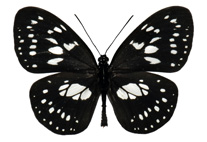Abstract
The nematode Heth impalutiensis n. sp. is described from an unidentified spirostreptid millipede (Harpagophoridae) from the Bukidnon Province of Mindanao, the Philippines. Based on morphological characters, H. impalutiensis n. sp. is closest to Asian-Pacific representatives of the genus. Females of H. impalutiensis n. sp. are close to H. dimorphum and H. vietnamensis in body size and form of the lateral lappets, but can be distinguished by the significantly longer tail. Males of H. impalutiensis n. sp. strongly resemble that of H. xaniophora by the presence of such a rare character combinations as mammiform papillae and a bursa-like cuticular fold, but can be easily differentiated by the numbers of genital papillae (7 vs 6 pairs, respectively). Heth impalutiensis n. sp. can be distinguished from all nominal species by hypertrophy of the anterior anal lip in females which overlaps the anal aperture. Phylogenetic analysis based on the newly obtained set of sequences did not provide an evidence of infraorder Rhigonematomorpha monophyly as two superfamilies Ransomnematoidea and Rhigonematoidea formed independent clades in the frames of ascaridid-spirurid-oxyurid super clade (Clade III of Nadler et al., 2007).

